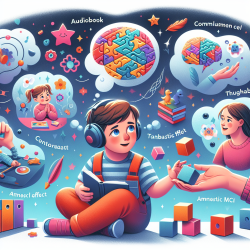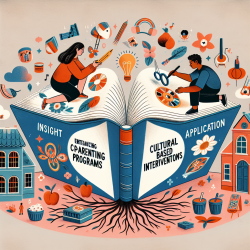In the field of speech-language pathology, staying informed about the latest research is crucial for providing effective therapy. A recent study titled "Exploring brain plasticity in developmental dyslexia through implicit sequence learning" offers valuable insights that can enhance practitioner skills and improve outcomes for children with developmental dyslexia (DD).
Developmental dyslexia is characterized by difficulties in learning to read despite normal intelligence and adequate educational support. This study explored brain plasticity in children with DD through implicit sequence learning (ISL) tasks, providing critical findings that practitioners can implement in their therapy sessions.
Key Findings
The study involved two groups of children—those with DD and typically developing (TD) children—who underwent two sessions of training on a serial reaction time (SRT) task with a 24-hour interval. The researchers measured gray matter volume (GMV) and white matter volume (WMV) changes to understand brain plasticity.
Key outcomes include:
- Both DD and TD groups showed increased GMV in the right cerebellar lobules 8 and 7b after training, indicating brain plasticity.
- WMV decreased in the same cerebellar areas from day 1 to day 2.
- DD children had larger WMV in the left posterior thalamic radiation compared to TD children, supporting previous findings of atypical development in this structure.
- A moderating effect of group on the correlation between WMV and ISL performance was found, suggesting different underlying learning mechanisms in DD and TD children.
Practical Applications
Based on these findings, practitioners can consider the following strategies to enhance therapy for children with DD:
- Focus on Implicit Learning: Incorporate ISL tasks into therapy sessions. These tasks can help children with DD develop better procedural learning skills, which are often impaired.
- Monitor Brain Plasticity: Use neuroimaging or other assessment tools to monitor changes in brain structure and function over time. This can help tailor therapy to individual needs.
- Tailor Interventions: Recognize that children with DD may rely more on explicit, stimulus-driven strategies. Design interventions that leverage these strengths while gradually introducing implicit learning tasks.
- Collaborate with Neuroscientists: Work closely with researchers to stay updated on the latest findings and incorporate evidence-based practices into therapy.
Encouraging Further Research
While this study provides valuable insights, it also highlights the need for further research with larger sample sizes and longer follow-up periods. Practitioners are encouraged to stay engaged with ongoing research and contribute to studies that can help refine and validate these findings.
To read the original research paper, please follow this link: Exploring brain plasticity in developmental dyslexia through implicit sequence learning.










